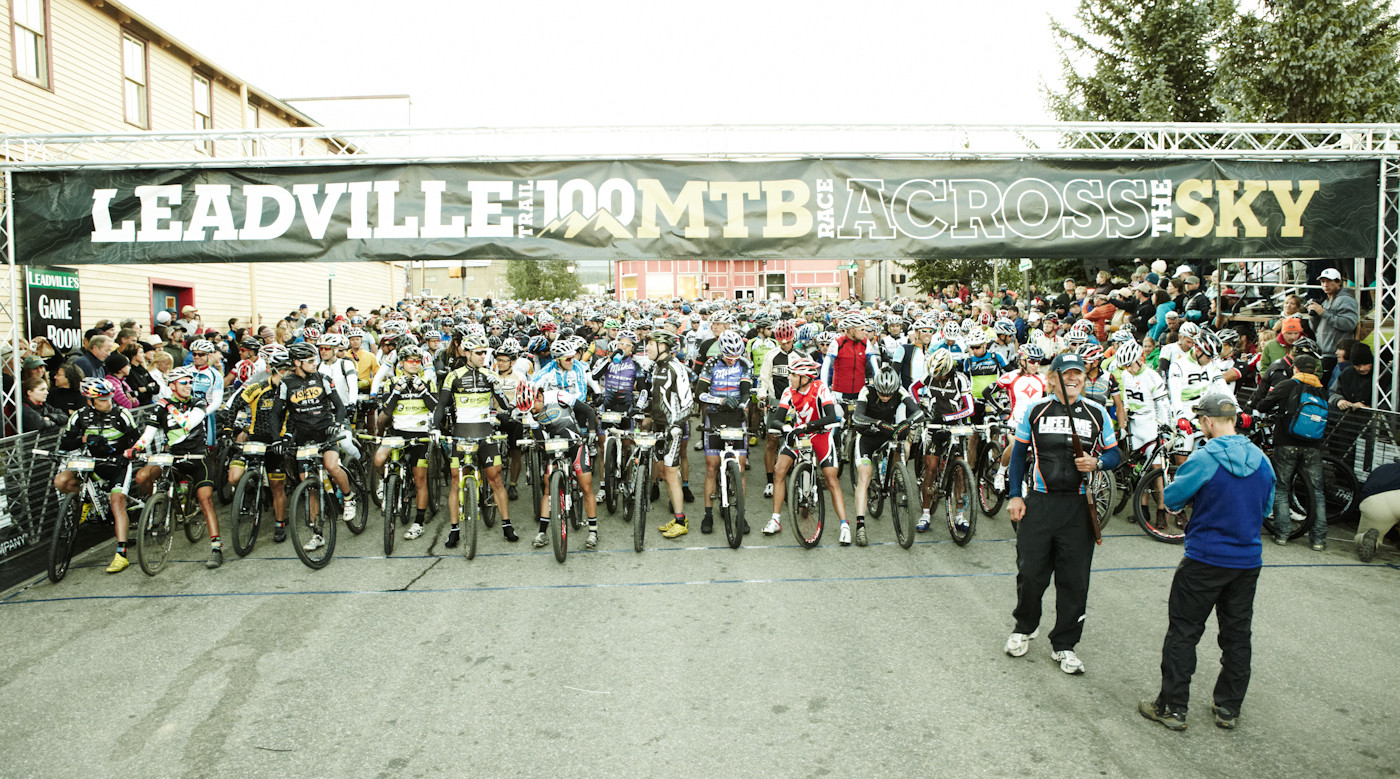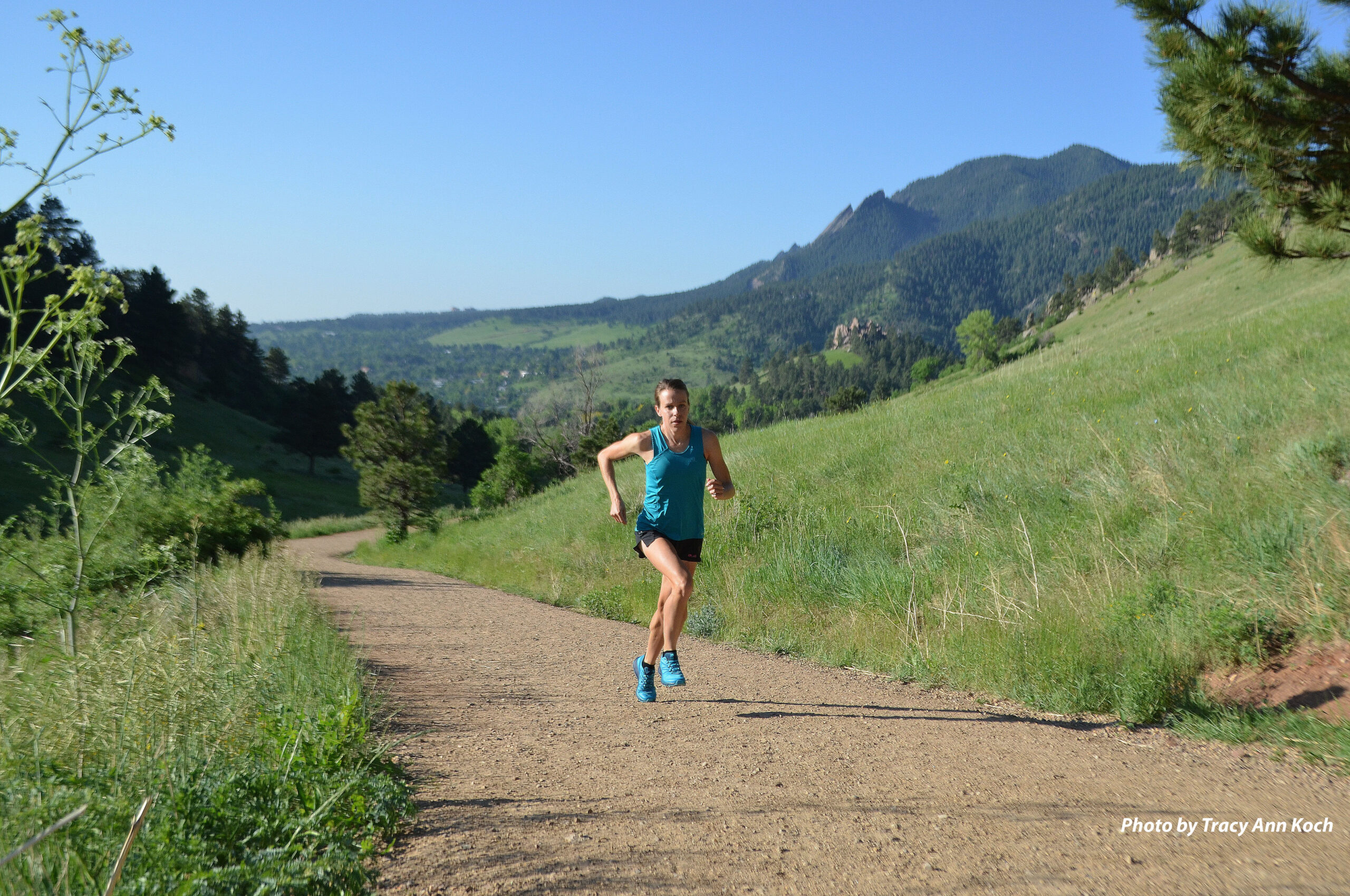Dispatches from Columbine: Why Race a Leadville Race Series Qualifier?
By Rebecca Rusch
I’ll admit it: I’m kind of lazy. I don’t get overly excited when I look at my training schedule from my coach and see hard intervals or race-pace efforts on the calendar.
Instead, I get a sinking feeling, knowing how very, very deep I have to dig to take that medicine and squeeze intense training out of my body. I know I must do it in order to be firing as best as I can in August, but I definitely struggle with motivation when I have to go that hard alone.
However, put me in a group of other riders around a start / finish line and I can easily find that extra motivation to push myself to the next level. It shows in my power numbers on my Quarq. I’ve always been this way. Maybe it’s laziness, or maybe it’s just proof that the brain can be our biggest strength or weakness. Something clicks for me at races, making it a much different experience than a normal training day.
It’s for this reason, that I use races as training and sign up for all kinds of events, from local short track races to stage races and everything in between. Motivation is the big factor for me, but there are a host of reasons to sign up for a Leadville Race Series MTB qualifier even if your key event is not until August. Here are the best reasons to get signed up right now!
Short-term motivation: It’s very easy to slack on everything from diet to intensity when your next race is months away. I know I’m always more focused when something is approaching on the calendar. It keeps me honest and gives me direction in my training.
Training Intensity that is hard to duplicate on your own: We are social creatures. Admit it: Other riders are motivating whether they are in front or behind you. There’s nothing like a little carrot to push you harder than you would alone. Why not get your long, hard training efforts in the company of other athletes? It’s much more fun and you’ll likely work harder than you would at home.
Training gauge: I do much of my training alone and don’t always know how I’m doing because I don’t have a point of reference or comparison. People will ask if I’m fit and I think I am. However, it’s not until I line up for a race against my peers and against myself that I truly find out if my work is paying off. It’s valuable to have these sorts of measurements throughout the season to stay on track and give you feedback on what’s working and what’s not in your training.
Nutrition practice (including what to eat/drink, how much, and delivery systems): There is more to a successful race effort than just pedaling hard. Endurance racing requires spot-on nutrition or you will waste all of that great training effort. Long, intense efforts require just the right mix of hydration, calories and electrolytes. You need to practice what tastes good, stays down and works when you are going all out. You also need to figure out how to easily get the stuff into your body. Something as simple as the wrong water bottle that’s hard to squeeze can make you drink less than you should. Practicing what to eat and the delivery system at a race before your key event will set up for success on the big day.
Pacing practice: There’s nothing like the start line at the Leadville Trail 100. The energy, the intensity and the excitement could be cut with a knife. This is precisely what makes athletes go out too hard and forget that they’re starting a 100-mile event and not an XC race. This is why I recommend lining up for other endurance events prior to LT100. A 100-kilometer race is the perfect training distance for a 100-miler and allows you to get to know your pacing and your style. Learn this about yourself and it will serve you well on race day. With the experience of a qualifier under your belt, you can develop a race-pacing strategy and stick to it instead of getting caught up in the intensity and perhaps riding someone else’s pace. That will always get you into trouble.
Getting your gear dialed in: One hundred miles can magnify the smallest distractions and then they grow into big problems. Things such as poorly placed cleats, the wrong saddle, uncomfortable grips, or the wrong chamois can not only cause discomfort, but could produce injury and even put an early end to your race. Working out these kinks in a qualifier is the best way to be sure they are not issues on race day.
Earning your spot in the right starting corral: The Leadville Trail 100 is the coolest starting line ever! It’s intense. However, it’s not much fun to be stuck behind people who are not riding at your pace. Whatever your level, it’s always safest and the most fun to be starting with other riders who are about your speed. One of the best things about the Leadville Race Series mountain bike events is that the time you clock for a qualifier will be used to place you in the correct starting corral for the LT100. Even if you’ve earned a spot in the lottery, a qualifier can ensure you are lining up to start right where you should be.
Rebecca


